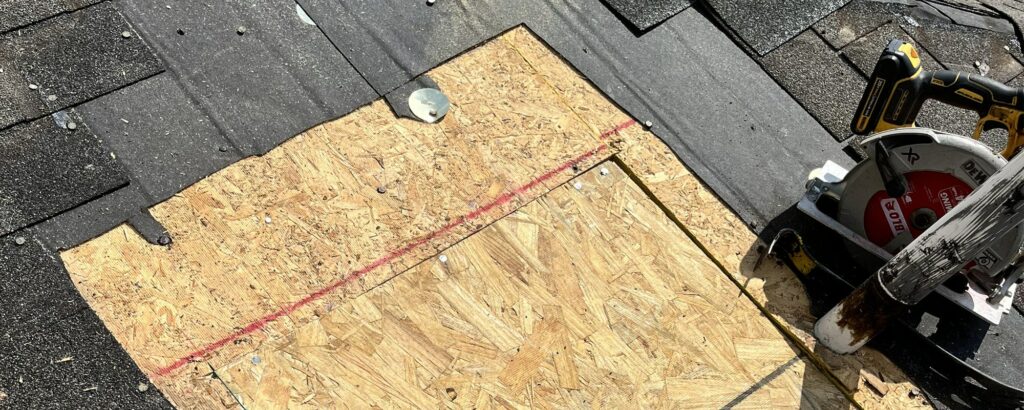In coastal communities, wind, rain and salt spray are commonplace. So are high-pitched roofs with large eaves. But why? With a few exceptions — such as the Gable Vented Double Roof — most coastal homes have peaked or gabled roofs with steep pitches and large eaves. These design elements not only look great but also deflect blowing rain and heavy snow, reduce the risk of ice dams in winter, shade windows during hot summer days and keep rainwater from penetrating the roof sheathing. There’s no one reason for this roof design trend in coastal homes; it’s a combination of factors. The combination of pitch, overhang and eave width all work together to help mitigate weather conditions in coastal climates. Read on to learn more about these factors and how they might influence your own home’s roof design if you live in a coastal area.
Steep Pitches
Most coastal roofs have steep pitches, which help keep rainwater out of the roof sheathing. While the styles of roofs vary greatly, the pitch is one of the main components that influences how water flows off the roof. Roofs with steep pitches are great for coastal climates because they help keep rainwater out of the roof sheathing, where it could freeze and cause damage. Shallow pitched roofs, on the other hand, are more prone to ice dams, which are caused when runoff freezes and backs up behind the shingles, pushing water into the roof cavity. When water in the roof cavity freezes, it expands, breaking the roof apart and causing interior damage. This is especially common in coastal areas that receive a significant amount of rain.
Rain and Wind Protection
Eaves protect from heavy rain and wind. Because coastal areas are exposed to strong winds and heavy rain, homebuilders often employ eaves that are deeper than usual. Eaves are the boards that project from the roof edge. Eaves that are at least as deep as the roof framing (the boards that form the roof’s skeleton) provide protection from heavy rain and wind. Eaves that extend below the roof decking provide protection from high winds, protecting the rest of the house from damage. Eaves that don’t extend below the roof framing may protect the house from rain, but they don’t offer any protection from high winds.
Salt Spray Protection
In coastal areas, roofs often include corrosion-resistant materials. Salt spray from ocean waves corrodes steel and aluminum. It also corrodes copper, which is often used for flashing. Steeper pitches on coastal roofs help divert water away from the roof’s edge, which reduces the amount of salt that’s deposited on the roof’s edge. Steel and aluminum are used for fascia protection because they’re relatively inexpensive, durable and easy to work with. However, both materials are vulnerable to corrosion from salt spray, which is why they’re often protected with thick coatings of paint or other finishes.
Ice Dam Protection
Deep eaves and small overhangs help prevent ice dams. Ice dams occur when water freezes and backs up behind the shingles. It often happens in coastal areas when warmer air penetrates the roof’s edge and then freezes at night. Eaves that are at least as deep as the roof sheathing provide protection from ice dams by diverting water away from the roof’s edge. Small overhangs that are no more than a foot deep are also helpful for preventing ice dams. They act like miniature eaves, diverting water away from the roof’s edge. However, if the overhangs are too small, warm air can still enter the roof’s edge, causing ice to form on the eaves below the overhang and behind the shingles.
Shading Windows
Deep eaves that project far from the house help shade windows from the hot sun. Windows on coastal homes get more sun than windows in other types of homes, so coastal homebuilders often employ deep eaves that project far from the house to shade windows from intense sunlight. They employ eaves that are at least as deep as the window sashes (the frames that hold the windows). Deep eaves that project far from the house provide shade that helps reduce window condensation, which happens when warm air inside the house comes into contact with cold glass. Eaves that are too shallow don’t provide enough shade, leaving windows vulnerable to condensation.
Summing up
As you can see, many factors go into the design of coastal roofs. Coastal climates are exposed to heavy rain and wind, and salt spray from the ocean is common. Coastal roof design often includes deeper eaves and smaller overhangs, which help divert water away from the roof’s edge and prevent ice dams. Roofs in coastal areas are often pitched more shallowly, which keeps rainwater out of the roof sheathing.
